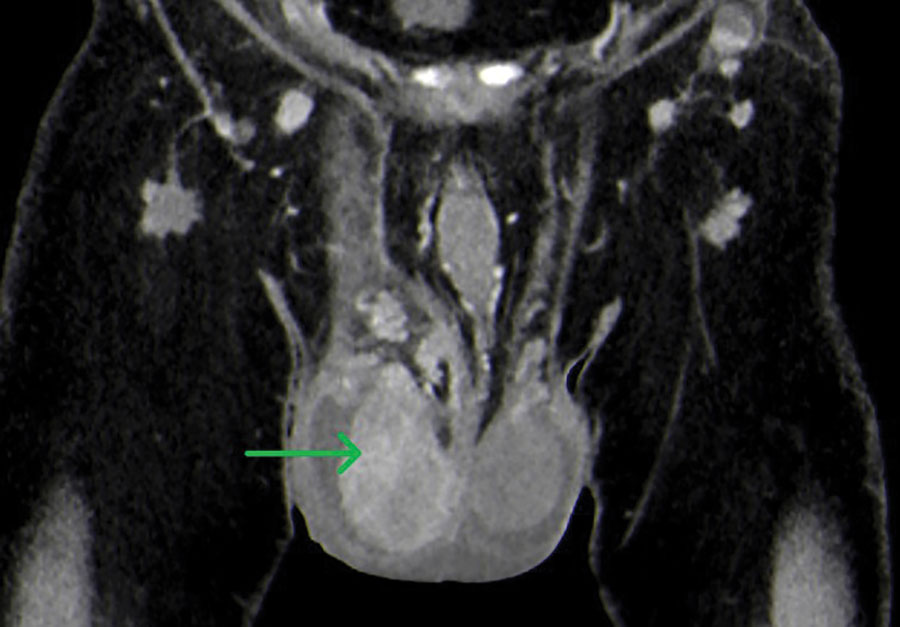Volume 29, Number 10—October 2023
Dispatch
Human Tularemia Epididymo-Orchitis Caused by Francisella tularensis Subspecies holartica, Austria
Figure 1

Figure 1. Computed tomography of patient who had human tularemia epididymo-orchitis caused by Francisella tularensis subspecies holartica, Austria. Coronal image shows the right testicle (arrow) during the arterial phase with hyperperfusion and nonperfused areas (abscess).
Page created: July 24, 2023
Page updated: September 20, 2023
Page reviewed: September 20, 2023
The conclusions, findings, and opinions expressed by authors contributing to this journal do not necessarily reflect the official position of the U.S. Department of Health and Human Services, the Public Health Service, the Centers for Disease Control and Prevention, or the authors' affiliated institutions. Use of trade names is for identification only and does not imply endorsement by any of the groups named above.